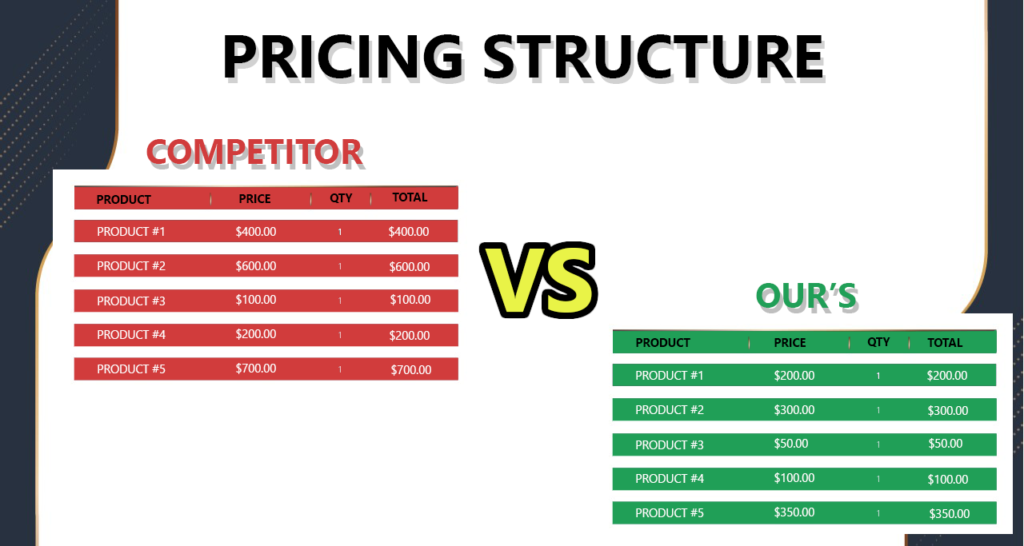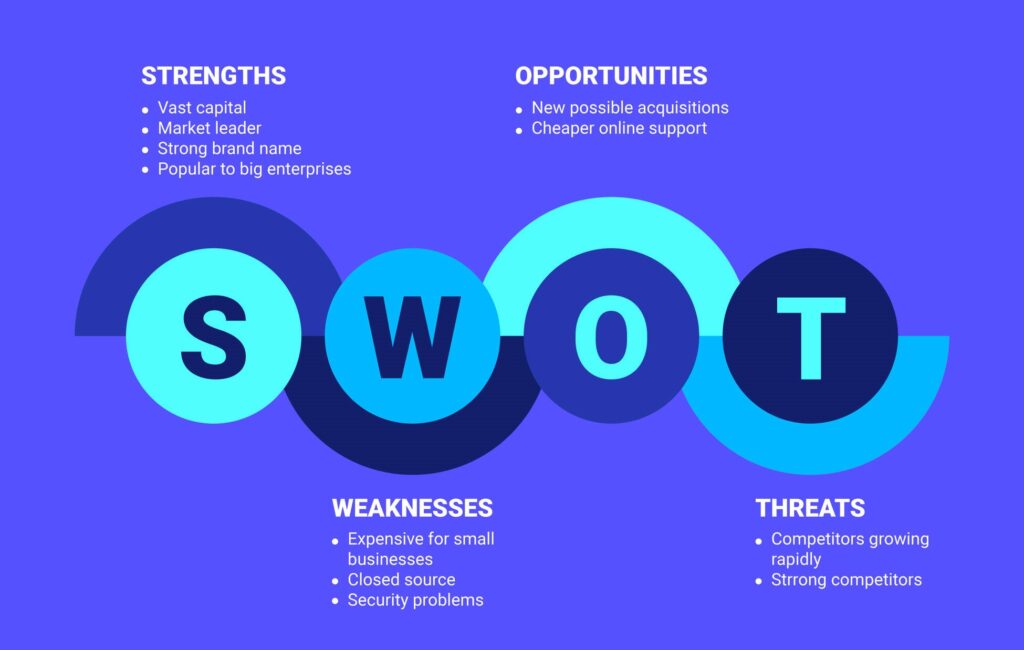7 Easy Steps on the way to perform a competitor Analysis
Want to stay far ahead of your competition?
Are you having trouble in replying to changes request or needs of clients? You can avoid that by doing daily competitor analysis. Let us show you how.
If you have not completed a competitor analysis before. We’re visiting walk you through the process, including what we ask ourselves, and employing a fake business so you can see how to apply it.
What Is a competitor Analysis?
It’s exactly what it seems like, which you’re presumably unsurprised by. You’re watching everything your competitor is doing (at least, the affects you can see, this is not commercial spying) and considering how your business compares.
Why bother doing a competitor Analysis?
There is plenitude of good reasons to perform an analysis of your challengers and it’s a common step in creating a new business or starting a marketing strategy.
But we feel there’s a touch of confusion around what the purpose of a competitor analysis is and how to complete one.
You can look into any aspect of the business that you want, and you’ll use a competitor analysis for a lot of planning purposes.
But a number of the most important reasons to perform a competitor analysis are:
- You’ll identify the effects your challengers are doing right. This may give you an idea of what you should be doing too.
- You’ll identify the effects your challengers are doing wrong. This may give you an idea of gaps in the request.
- You’ll be ready to identify the ways your company, product, or service is different from your challengers. And also, establish your value proposition (what you bring back the table).
- It gives you a study of what to anticipate for growth.
- It allows you to work out what guests are saying about them (or what questions they’re asking, problems they need, or results they want).
How frequently do you have to perform a competitor Analysis?
We’d recommend doing an in- depth analysis a minimum of formerly a time, but we wish to put this on our timetable to do every six months.
This is so we do not spend too important time doing commodity that’s outdated or falling short of what our customer’s challengers are doing.
Let’s get into the way to perform a competitor analysis, also as what we ask ourselves and look for.
7 easy steps on the way to perform a competitor Analysis in marketing
We’ll show you ways to do this using a made- up brand, we’ll call it Morgan’s Cafe.
We’re including information on each step, inquiries to ask, exemplifications once they apply, and ideas.
1. Find your challengers
You need to know who differently is offering commodity that could replace your product or service, who’s in your area.
These are your direct challengers and will be your main focus.
Still, do what your guests will do search online, if you do not know where to start out.
Look for your business type or hunt keywords you suppose your guests would search and see what comes up. You can do this on social media or on hunt machines.

2. Figure what your challengers do or give
Now that you’ve set up your challengers, take some time to
- Browse their website,
- Read their social media,
- Watch their YouTube vids, and
- Comb their blog to seek out what your challengers give.
You’ll want to understand introductory effects like what their products or services are, what their shipping policy is, their return policies etc.
You also want to look through any gifts or offers available.
3. Describe how your challengers vend (and does it work?)
In this part of your competitor analysis, it’s time to feel at the deals process.
We recommend walking through the page as you’re a client and do the following:
- Browse products
- Examine the product page
- Choose and add a product to your cart
- Start the checkout process (or buy an item to work out the process through from launch to finish)
- Examine their social media feeds
- Subscribe their newsletter
- Read through emails you get.
- Abandon your cart to work out if you get a reminder
- Search keywords online
- Review any advertisements that show up
Look at reviews and read comments for client feedback:
- Are people engaging with the posts?
- Guests leaving good reviews?
- Are there common complaints?
- Are you suitable to tell how numerous deals they’ve made?
4. Dissect your competitor pricing and the way they structure the product
You browsed through product pages and shopping during the last step, but now, we choose a deeper dive. Start with the wares runner and pay attention to pricing while you explore.
Here what we regard for:
- What type of images & videos are they using?
- What’s the layout of the pages?
- What’s the dupe like? Long? Short? Descriptive? Pellets?
- What product or service information is included?
- What other elements are on the page?
- Are there suggested products? Reviews?
- How does one add to tote?
- What’s the price?
- How is it compared to the other products?
- What proportion is the shipping figure?

5. Comb your competitor’s digital marketing strategy (from paid to organic)
Note you’ll notice that a number of these way in our competitor analysis lap others.
You’re completing variety of these way at the same time, so do not worry about keeping them rigorously within the order we’re presenting them now.
Spend a while on your competitor’s social media channels. Utmost businesses list their social biographies on their website, but you’ll manually search the most popular platforms.
Here’s few things which you need to keep in mind while doing competitor analysis:
- What platforms is that the company using?
- how to do a competitor analysis ?
- how to do a competitor analysis for a product?
- How frequently are they posting?
- What kind of content are they posting (i.e., carousels, vids, Instagram rolls, Stories)?
- Search them on hunt machines (Google, YouTube, Pinterest) to work out what comes up (paid and overdue)
- At which time they post?
- What’s the average number of commentaries likes?
- Do they answer commentary?
6. Read client reviews, commentary, questions, and complaints
This is the time to read through reviews and commentary to see what your challengers’ guests are saying about them.
Not only will you get to hear to accounts of their experience, but you’ll have a front- row seats to any client complaints or questions.
This can help you when developing your strategy or immolations.
For illustration, Morgan’s Cafe challengers close at 3 PM on weekends and guests are leaving commentary asking them to stay open latterly.
Morgan’s Cafe can acclimate its hours and run, let’s say, a Facebook announcement crusade advertising longer weekend hours.
7. Perform a SWOT analysis
The geek analysis is what you’re doing at the end of all of this legwork so that you can put all the information you’ve collected.
Combine it with specifics for your business and make an idea for developing new marketing strategies or new products.
As you know, S.W.O.T is a well-known acronym for Strength, Weakness, Opportunities and Threats.
We did a full tutorial on performing a geek analysis post, so you ought to check it out after this.

Conclusion
It’s easy to specialize in all of the tasks you need to complete for your business or all the ideas that you have or creating content.
But you do not want to prompt so focused on your own business that you’re not keeping an eye on your challengers and conforming your plan so you can stay applicable and top- of- mind.
As Digital Marketing Agency, we also provide Digital Marketing Services for your website, please check them out.
Frequently Asked Questions (FAQs):
1. What does competitors’ analysis mean?
- It means to research your competitors so it will be useful for sale,
- It’s important if you’re taking following things into account for competitor analysis:
- Pick the proper competitors to analyze
- Know which angle of your competitors’ business are worth analyzing
- Know where to seem for the data
- Understand how you’ll use the insights to improve your own business.
2. Who are your competitors?
If you would like to effectively build out your strategy, you ought to dive deeper. Consider smaller competitors. While they could have less market share, they might eventually capture more business. If you don’t take action on this matter now, then it could dent your profit down the road.
3. What are strengths and weaknesses of your competitors?
By evaluating your competitors, you’ll see how you stack up against them.
Ask yourself:
- Where does one have a competitive advantage?
- And where they might have an edge over you?
4. What are the profit chances and scourges within a given market or industry?
You should try to leverage your strengths and take advantage of your competitors’ weaknesses, in order that will inform some of your company’s opportunities. Alternatively, competitors will probably attempt to capitalize on your weaknesses, in order that will inform some of your threats.
5. What are the features of your preferred customers and your competitors’ preferred customers?
An Ideal Customer Profile (ICP) is a description of the characteristic of customer that would crop the most profits from your offering product/service. These customers tend to supply the most successful sales cycles, the best retention rates and the most evangelists for your brand.
Have some time? Visit our website or Instagram page to know more.



